Why CoD, Titanfall, and Destiny are different, in exactly the same way
There’s something very different about this year’s spate of big-name FPS. Jetpacks. Jetpacks all over the place. Where once the plodding, funneled, straightforward shooting of the modern military man-killer dominated the AAA spectrum, now we have something altogether freer, more flowing, and almost pathologically obsessed with its newfound Y-axis.
Even the series and developers previously at the forefront of the A-to-B, whack-a-mole genre seem down with the upward-facing gameplay. Call of Duty: Advanced Warfare adds exo-suit powered super-jumps, ground-pounds and hover jets, while in Titanfall, ex-CoD developers Jason West and Vince Zampella have built a game entirely around the kind of double-jumping, wall-running malarkey previously reserved for gaming’s platforming elite. Also, you can clamber all over great big mechs and shoot their fizzing robo-brains out. That bit's important too.
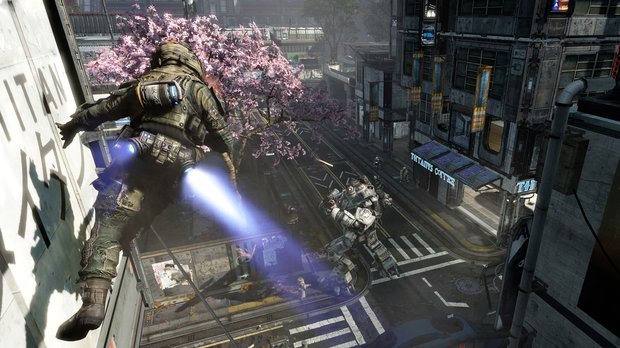
Moving further away from the more traditionally militarised zone and into the realm of overtly fantastical sci-fi, there’s another interesting parallel of series and successor going on. Halo has always embraced the air, Master Chief’s delightfully floaty jump more akin to wearing armour made of fluffy magic clouds than the unliftable hammer of the gods. And it’s always been capitalised upon by the series’ vast, multi-tiered level design. But the upcoming Halo 5 beta (Which I've played, by the way), takes things up (and down) several new levels.
Making full use of the Mjolnir armour’s jets for the first time, Halo 5’s new standard abilities include floating, mid-air aiming, powered-up melee kills, and directable ground-pounds. And in the blue spawn-point, we have Destiny, the MMO FPS from original Halo dev Bungie. Expanding its predecessor’s rangey air-game with even greater, more controllable verticality, it also includes include floating, mid-air aiming, powered-up melee kills, and directable ground-pounds.
Hmmm. Something's going on here, but I can't quite put my finger on it.
So why has this happened? Well first, let's back up a bit. The advent of two thematically similar works appearing simultaneously in entertainment media is not exactly unusual. In 1998, Armageddon and Deep Impact turned up in cinemas within a couple of months of each other, both awkwardly wearing the same asteroid-patterned dress. The same thing happened back in ’96, with Mars Attacks! and Independence Day. Sometimes, parallels just happen. Sometimes it’s a coincidence; sometimes there’s something more going on. But in the case of this current crop of gravity-abusing, physics-bullying gun-fun, it's almost certainly both.
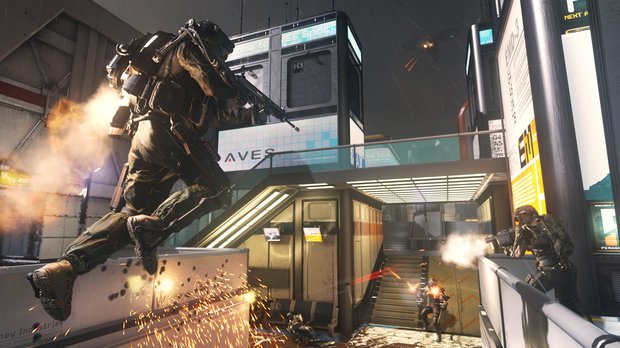
The thing is, the event of two similar films appearing together is almost to be expected. Entertainment media is a social barometer, always reflecting the trends and concerns of its audience and makers at any given time. Similar concepts will be developed independently from each other from time to time, because the creative influence behind them exists separately from either, and surrounds both.
Weekly digests, tales from the communities you love, and more
With this year’s shooters though, it's (partially) different. The four philosophically similar games can be split into two lineages, one stemming from CoD, one springing from Halo. Have the two sets of devs been cribbing from each other? Well, not really. Not in the way a more suspicious mind might think, anyway. Titanfall was revealed in June 2013. By that point, Call of Duty: Advanced Warfare would've been well underway at Activision. It’s highly doubtful that new CoD developer Sledgehammer would willingly give their game a rapid redesign based on the ex-Infinity Ward heads’ work, let alone have been able to turn it around in time for release this year.
Similarly, Halo 5's new Spartan abilities, all of which uncannily ape various higher-level Guardian skills from Destiny, were only revealed in late October of 2014. Fully integrated into Halo 5’s multiplayer, there’s no way they were thrown together in a heady panic after Destiny launched in September. So has there been collusion? Have old colleagues been speaking to each other? Have Bungie guys got drunk with old friends left behind at new Halo studio 343, happy to let a few indiscretions slip between buddies? Have Respawn staff told design secrets to ex-compatriots at Infinity Ward, and Infinity Ward in turn passed the information over to Sledgehammer, under decree of the Dread Lord Kotick’s all-seeing death-eye? Maybe. People are people after all. All the NDAs, exclusivity agreements, and corporate diktats in the world have an uncanny habit of fading into the comforting mists of ‘It’ll be okay’ once old colleagues get a few beers down.
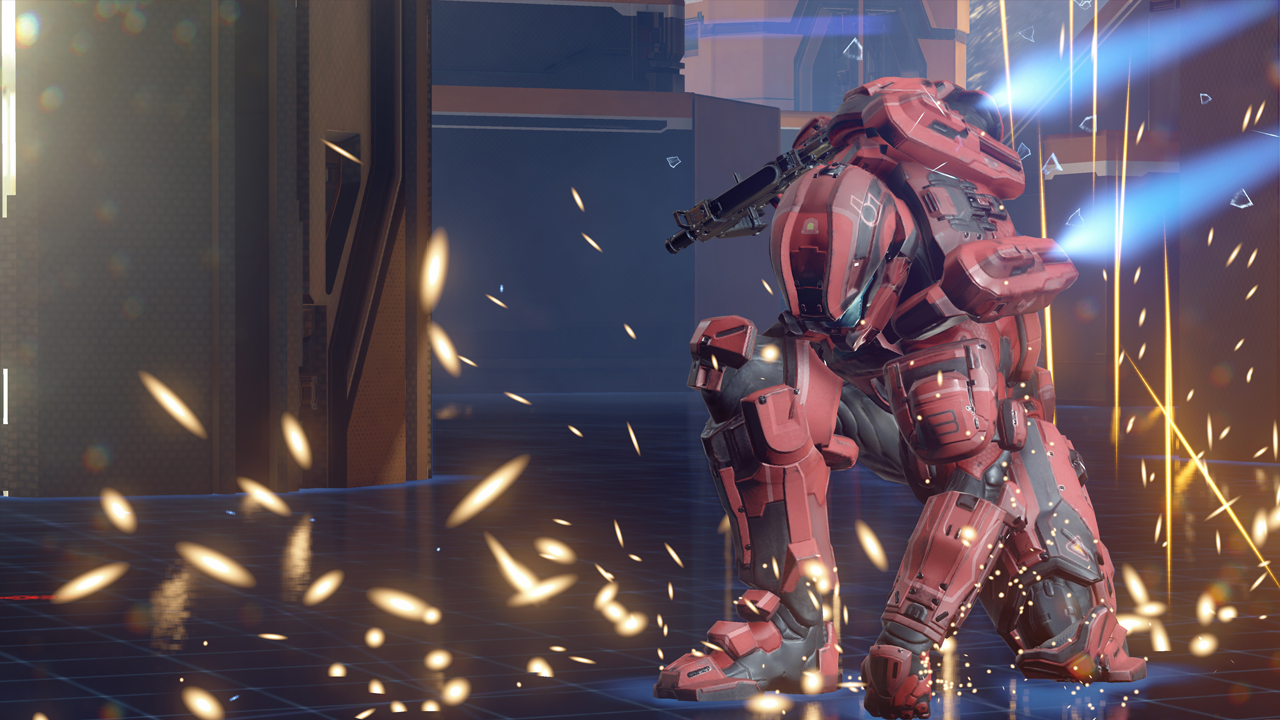
But I think, more than that, this series of not-coincidences finds its explanation deeper in the workings of the wider creative process. You see, creating things as part of a team isn't always a case of having an idea and then running with it. Things need development. They need the right timing - both for the team’s creative scheduling and the readiness of the market. It’s the same on GamesRadar as it is anywhere else. Hell, we had to sit on this nugget of absolute editorial gold for the best part of a year while we waiting for Hallowe'en to come around. And I think something similar has probably happened with this year’s shooters.
Despite Respawn Entertainment's statements to the contrary, there’s a chance that the seeds of what eventually became Titanfall were first sown during West and Zampella's Infinity Ward days, and were then developed independently at both EA and Activision after the split. Similarly, Destiny’s new control mechanics might've been discussed years back, when Bungie was still prototyping new ideas for Halo, only to be worked on in earnest by the remaining Bungie staff at 343. In fact they very probably were. We know that Destiny existed as an idea as far back as Halo 3: ODST. It’s a totally natural process, and both studios can claim legitimate ownership of those designs, assuming they were originally conceived as one single team. A parent doesn't immediately lose custody of the kids following a divorce.
But that doesn't explain why both CoD and Halo, two series binarily opposite in their design conceits, have ended up going in similar directions, both directly and through their descendants. It all comes back to Bruce Willis on the giant space-rock, I reckon. For a few different reasons, the exploration of movement, control, positioning, and true, 3D gameplay seems to be the next logical step for console FPS.
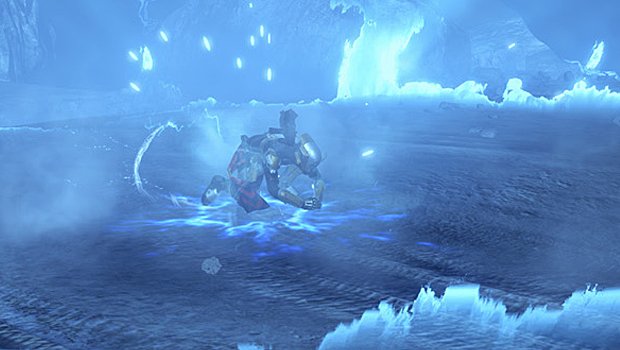
As much as I don’t want to put the boot in, a previous console generation dominated by staid, ‘flat’, pseudo-realistic shooters has to be an influence. Whether continuing to work on those franchises, or newly broken free, there must be an instinct in their developers now to blow off the cobwebs with something at the opposite end of the spectrum. Even after working on a series as freeform as Halo, Bungie might understandably have felt the compulsion to cut loose, exploding things outward and upward once previous expectations were no more.
And besides, what else is the obvious next stage of shooter development? The last generation spawned and honed online multiplayer progression (*cough*grinding*cough), an emphasis on aim-down-sights shooting, and the ubiquity of scripted set-piece ‘action’. Having polished addictive feedback structures and focused, controlled gameplay, the next logical area to develop is in-game freedom of interaction. We've done everything we can around that stuff, so it’s time to bite the speeding, air-launched-off-a-wall-jump bullet and get on with it. After all, even the more casual shooter fan has surely now done everything there is to do in the more straightforward FPS. Everyone is ready to move on.
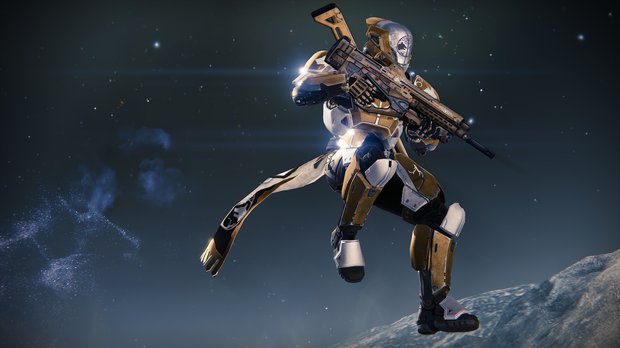
We’ve had a few abortive attempts at this already, don’t forget. Bulletstorm’s immensely creative shooting criminally failed to take off, through a combination of misleadingly stupid marketing and the game simply being ahead of its time. Ditto Shinji Mikami's third-person, sci-fi extravaganza Vanquish, which blew the roof off the cover-shooter with immensely freeform, lightning-fast action, but again failed to find a mainstream audience. Video games are an ever-evolving, iterative medium, but woe betide those inspired souls who try to evolve things too quickly. But, much as Guardians of the Galaxy finally made Firefly's concept a success, ideas persist, and wait until their right time.
It feels like this is the right time for creative, explorative player control to take off in console shooters. We've had cinematic epics. We've had crazy weapons. Now surely it's time for our physical presence to become the focus, our own agency and creativity driving our experiences rather than dictated events and funneled combat. Personally, I’m all for that. And with four of the industry’s biggest FPS developers on board, it seems that within a couple of years, the rest of the gaming world might be too.



